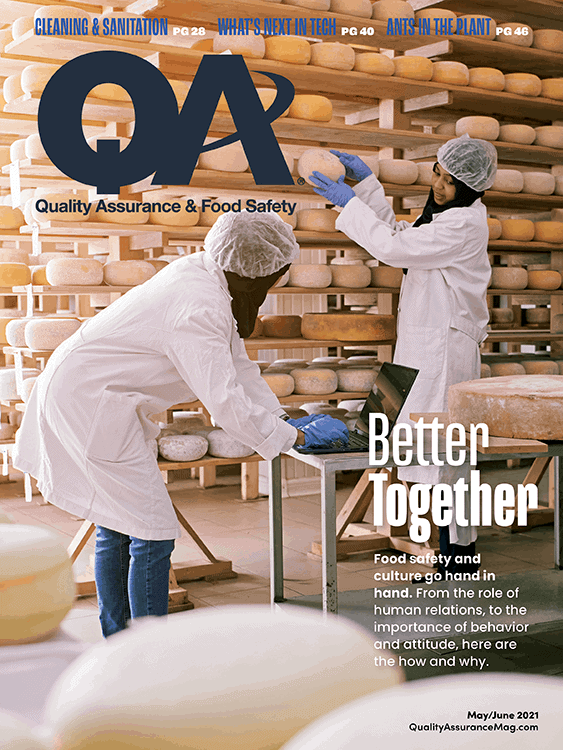Food safety is a team effort, and a company’s quality assurance efforts can only be as good as the people, at all levels, who are working toward those goals every day. Basically, food safety is all about the people. That’s why human resources (HR) plays an integral role in establishing and promoting a food safety culture, from hiring talent that aligns with QA values to designing effective training and incentive programs.
We sat down with AIB International’s Stephen Ward, manager, quality assurance, EMEA GMPs, and Raul Arroyo, food safety professional, to understand how HR and food safety and quality assurance can collaborate to develop and sustain a food safety culture.
Culture is tough to explain sometimes.
“Culture in any facility can be challenging,” said Ward. “It relies not just on measurables and specifics, but also ethos or customs and values, which are felt by people at all levels.”
“HR should be part of the food safety team, helping to hire the best talent and ensure that there is a cultural fit with the company.” Raul Arroyo, food safety professional, AIB International
Breaking down communication silos so messages flow easily through various departments and job roles helps grow a culture that everyone understands and supports. “When management is involved, this communication improves,” Ward said.
Guidance from HR can help QA professionals and management effectively approach employees to address issues related to labor regulations, for example. “Their guidance can direct employee engagement to ensure a positive response and improvement from the employee,” said Arroyo. “HR can also provide information about the languages that are spoken in the facility to ensure that training and education are delivered in a way that is most beneficial.”
HR gets your team.
“They know the most about people and the most about the culture that exists in the facility,” Ward said. “They know what is going on beneath the surface and are the best source of knowledge about the people and teams.”
For this reason, HR’s involvement can elevate food safety training. Their insight can also help direct food safety training to change attitudes, mindsets and ingrained behaviors. “Ultimately, this builds a culture that is committed to food safety,” Ward said.
Specifically, HR can build reinforcement programs tied to incentives. “By understanding the motivations of the people and teams,” Arroyo said, “the incentives you offer will be reflective of their interests, whether it’s tickets to a basketball game or a classical music concert.”
Hiring? Invite HR into the room.
“HR should be part of the food safety team, helping to hire the best talent and ensure that there is a cultural fit with the company,” Arroyo said.
Also, HR and QA should huddle and discuss interview questions that support food safety goals — and every candidate needs to answer the same questions. This will help the team identify talent that respects a food safety culture and is prepared to live it.
“For instance, you might ask, ‘What do you think about the need to remove your piercing every day before going into production?’ ” Arroyo said. “Their answer will tell you a lot about their cultural fit within an organization that is committed to food safety.”

Explore the May June 2021 Issue
Check out more from this issue and find your next story to read.
Latest from Quality Assurance & Food Safety
- Scentian Bio Wins Top Prize at IFT FIRST Startup Pitch Competition
- Evigence Debuts FreshSense to Change How Food Industry Measures Freshness
- Acme Releases Automated Scraper Strainer
- Mitzi Baum to Step Down as CEO of Stop Foodborne Illness
- USDA ARS Scientists Develop Pectin That Gels with Low-Sugar Products
- GS1 US Celebrates 50-Year Barcode 'Scanniversary' and Heralds Next-Generation Barcode to Support Modern Commerce
- New Florida Extension Agent Will Teach Stakeholders About Food Safety
- Athletic Brewing Company Announces $50 Million Equity Financing Round Led by General Atlantic





